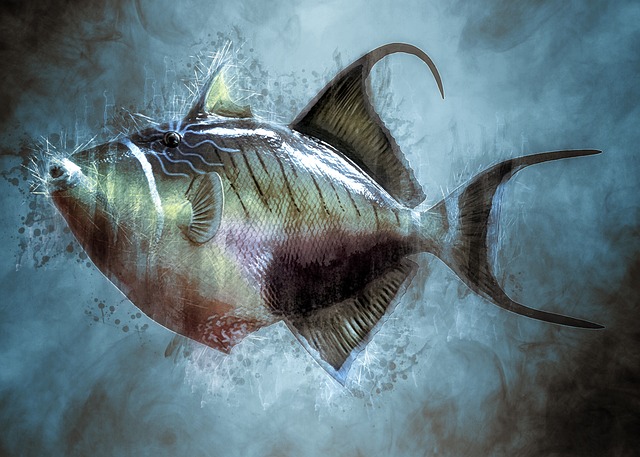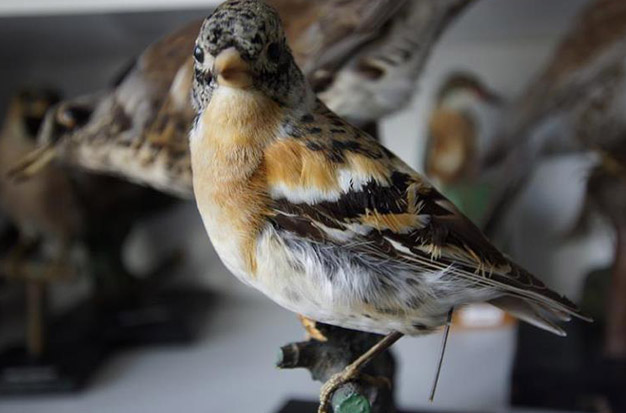There are many options to suit every budget if you want to learn about the art of taxidermy. Taxidermy techniques were once closely guarded trade secrets that could only be learned by spending years in studios or museums as an apprentice. Aspiring taxidermists can now choose from a variety of training options.
Table of Contents
Taxidermy Courses And Programs
Make sure you are fully aware of the categories covered in any taxidermy course or program before enrolling, for example. small game, large game, birds, fish, etc. Also, find out what equipment and supplies are required of you as well as those that are included.
In-depth taxidermy programs frequently include theoretical classes on topics like marketing, entrepreneurship, business economics, and similar topics in addition to practical classes on taxidermy laws and regulations.
A website called Freetaxidermyschool.com offers some online taxidermy courses.
The purchase of a kit for taxidermy and adherence to the manufacturer’s instructions are two ways to get started as a hobbyist.
How To Learn Taxidermy?
Try Taxidermy Before You Spend A Bunch Of Money
A costly education that might not be for you is the last thing you want to do. If you hadn’t at least tried painting on your own before enrolling in art school, you wouldn’t, would you? The same applies to taxidermy! Since I live in the US and am most familiar with it, I will concentrate on US-based taxidermy schools even though they are available all over the world. Normally, you are responsible for covering your own travel expenses, meal expenses, tuition, and, in many cases, the cost of your materials (specimens). Intensive taxidermy programs typically last 4-6 weeks. If a taxidermy school is not conveniently located for you (i.e. in rural You’re looking at a total of at least $10k, which is a lot of money for most people (whether it be in Wisconsin, Montana, or anywhere else that schools are located). Most of those fees are non-refundable, so you’d be out a lot of money if you arrived at school on the first day, made your first cut, and then decided that seeing a deer carcass with its tongue hanging out wasn’t quite your thing.
How do you determine if you can handle it then? The simplest option is to enroll in a one-day course, the majority of which cost $300 or less. You can probably find something by searching for “[insert major city] taxidermy class” on Google, but if you need a good justification for a trip, you can always go to another city for a lesson! Cities all over the world are home to a large number of reputable, experienced, and welcoming taxidermists who provide affordable lessons.
The next best option is to purchase a taxidermy guide if that is out of your price range. One is $20 in my online store, but there are also many printed guides available. If you’re shopping on Amazon, try to find a product that is solely focused on the procedure rather than a generalized view of the business and ethics. You can always read about the history separately, but this will help you more immediately for your first few projects.
Attending Taxidermy School
There are many schools out there that are managed by people who have their own collections of taxidermy products, such as forms and eyes. While having a product line and teaching classes isn’t necessarily a bad thing, some universities will only teach you how to use their specific products (like forms with preset eyes) making you completely dependent on them after you graduate. Choose a school that teaches you how to get by using a variety of products if you choose to attend one. For instance, avoid a school that only uses their own line of products to instill dependence and is unable to demonstrate how to use earliners AND how to make Bondo ears—these are the two main techniques for maintaining taxidermy ears upright.
You’ll discover as a taxidermist that not every project goes exactly as you had hoped. When a project requires it, you’ll need to act quickly on your feet and innovate, so you should always have a backup plan in place in case one approach doesn’t work. You are all aware that there are various methods for cat skinning… and your taxidermy teacher should be able to teach you all of them!
Respect Your Elders
If you’re new to any kind of craft, industry, community, etc., it should be common sense not to shit all over the people who have laid the groundwork for your success. It goes without saying that common sense isn’t as widespread as we would like it to be, so I’m including this reminder. Though you may have some excellent ideas, it’s always a good idea to start by building a strong foundation, the majority of which was laid by those who came before you. Be sure to show kindness to those who can assist you!
Regardless of my political views, I feel a particularly close connection to the people who have been engaged in the taxidermy business for much longer than I have—in some cases, longer than my parents. I wouldn’t be where I am today without them!
Remember History Isn’t Perfect
The first lifelike dioramas that I am aware of were made by Martha Maxwell, one of my favorite taxidermists of all time. Maxwell traveled extensively in the wilderness west of the Mississippi and gathered specimens. In order to achieve the highest level of anatomical accuracy, a form that goes inside the hide during mounting is replicated using the animal’s carcass in a process known as “carcass casting.” Unfortunately, Carl Akeley—often referred to as “the father of the modern taxidermy industry”—is given the majority of the credit for her discoveries and inventions, despite the fact that Maxwell had developed all of “his” concepts some thirty years earlier.
Even though history cannot be changed at this point, more than a century later, we can move forward with better practices. I can’t deny Akeley’s importance in normalizing taxidermy and making it a significant component of our country’s natural history museums, but he also erased women’s contributions to the industry in his wake. Please keep in mind to express gratitude to those who first laid the foundation for your path to becoming a taxidermist (or an expert in any field, really) as you proceed along it.
Be Willing To Work
With the way the internet is set up, it’s very simple to see someone succeeding at something and feel tempted to ask them for advice on how to achieve the same success… but please don’t! Before attempting to coax advice or assistance from someone, you must first put in some independent work if you lack experience in the field.
Any type of craft can be learned through an apprenticeship, but you must put in work in exchange for your free education. You should be willing to practice alone at home before getting a tattoo; however, do not attempt to skin your own leg… you know what I’m talking about here) and demonstrate your seriousness to your potential mentor. Use the classes or tutorials I mentioned above to gain experience if you don’t have months or years to devote to working as an apprentice for a reputable taxidermy company.
It’s a really good idea to begin your questions to people you see online by saying something like, “Hello, I was wondering if I could make a small donation in exchange for asking you some questions. Which method of contact with you works best? Could you direct me to someone else who can help if you’re unable to do so?”
This communicates to the other person that you value their time and are committed to picking their brain. Just today, I received a small donation request from someone who was extremely kind in their messages. They had been so kind to them and had helped them with the project, so I told them not to worry about it. Nevertheless, they made a donation, which made me cry.
Internet Is Your Friend
Whether it’s housing dermestid beetles or euphonizing fluid-preserved specimens, if you’re eager to learn something specific about specimen preservation, someone has probably written about it online. Because they are written by Ph.D.s, I have found that university publications are the best. students that have dedicated They dedicated YEARS of their lives to perfecting a particular method of specimen preservation. I have countless numbers of these articles saved as favorites on my computer for later reading.
The forums on Reddit and taxidermy.net that are devoted to providing taxidermy advice are very beneficial. If you don’t take criticism well (I don’t post very often, but I do!) then you should probably avoid doing it.) it’s totally fine to just lurk and ask questions about other people’s projects! Taxidermy.net also has a buy/sell/trade forum, but if you’re new, make sure you follow the rules to avoid bringing up-to-date ads from five years ago and disrupting the workflow.
Last but not least, purchasing used books about taxidermy on eBay is fantastic. The breakthrough magazine is especially useful, and if you get a few issues from different years, you can see how the taxidermy industry is evolving.

Advice For Learning Taxidermy
- Take a class or buy a kit or guidebook before you commit to going to taxidermy school
- Taxidermy school (in my opinion) is not 100% necessary but whether it is beneficial to you or not depends on how you learn
- Respect those who have come before you, but recognize that innovation is also important in our changing world
- Be willing to do some hard work if you are seeking advice or education for free
- Google is your friend (and I’m not being sarcastic) – I’m going to go over some free resources that don’t require taking advantage of anyone else’s time or money (or yours, aside from your internet bill)
Do I Want To Work As A Taxidermist?
Taxidermy is the art of preserving dead animals with the object of restoring a lifelike appearance for display as trophies or museum exhibits. Fish, birds, small mammals, and large game are among the animals that must be prepared, tanned, stuffed, mounted, and retouched during the process. In sports or taxidermy shops, taxidermists can work either part- or full-time. Others are employed by museums of natural history. Many people enter the field with the intention of starting their own taxidermy businesses.
Many taxidermists accept jobs as they come in because work in the field can be irregular. The occupation can be categorized as a craft art because it requires considerable skill, training, and attention to detail. Of course, taxidermists should feel at ease doing consistent work with dead animals.
Personal Requirements For A Taxidermist
- Enjoy natural history and animal anatomy
- Artistic interests such as sculpture, painting and drawing
- Good observation skills
- Good dexterity with tools and equipment
- Woodworking or carpentry skills
- Patient and careful
- Attention to detail
- Good hand-eye coordination
Education & Training For A Taxidermist
Even without formal education, you can work as a taxidermist. In taxidermy studios, you’ll probably receive some informal training while working. Employers typically demand Year 10, though entry requirements may differ.
Duties & Tasks Of A Taxidermist
Duties
- Take measurements and note features of specimens before mounting
- Reproduce specimens by moulding and casting with a variety of materials including plaster, polymers, plastic, fibreglass and polyurethane foam
- Remove and clean skin and treat with preservatives
- Place skin on a model to reproduce the exact size and shape of the specimen
- Preserve and prepare skeletons through the use of chemical and non-chemical treatment
- Pose small animals and preserve them by freeze-drying
- Prepare native and non-native animals for special exhibits
- Prepare and preserve biological material for museum displays
- Collect and preserve foreground material (plant, soil and leaf litter) for creating natural environments for diorama displays
- Keep specimens and displays in good condition.
Tasks
- receives, ships, and unpacks exhibits..
- aids in lighting and display equipment setup..
- creates and arranges display areas, display cases, and exhibit furniture..
- mounts and readies objects for display..

Working Conditions For A Taxidermist
Taxidermists can work for museums as preparators or exhibition project officers. They also produce models and habitat displays for museum exhibits.
Employment Opportunities For A Taxidermist
Government agencies, the Commonwealth Scientific and Industrial Research Organization (CSIRO), museums, educational institutions, and smaller private commercial studios all employ taxidermists. In Australia, employment options are extremely scarce because most museums only have one position available for taxidermists. In other countries with game animals, there might be more opportunities.
The Best Way To Become A Taxidermist
Complete A Taxidermy Program
Accredited trade schools and some community colleges offer certificate and diploma programs in taxidermy that train students in the technical and artistic abilities necessary to work as taxidermists. Programs give participants the chance to collaborate with experienced taxidermists on real-world projects in studio settings. Tools, techniques, and knowledge specific to various animal species—usually birds, fish, and small and large game—are covered in most courses. Regulations for taxidermy at the state and federal levels, airbrushing techniques, and entrepreneurship may be covered in additional courses. Typically, students have the option to enroll in single courses or finish variously long certificate and diploma programs.
A foundational understanding of business and marketing is crucial for success in taxidermy because it provides the possibility for self-employment. Having a high-quality website with images of taxidermy projects, for instance, can help a new company get off the ground. Although some programs in taxidermy include business education, additional courses might be useful.
Obtain State License And Federal Permit
The majority of states demand that taxidermists hold a license, but each state has its own requirements for professional practice and specific licensing. For licenses in different categories, such as general, mammals, birds, and fish, some states require applicants to pass an exam on taxidermy laws. The state department of natural resources or the department of fish and wildlife should be consulted by applicants to confirm the requirements for licensure and to get detailed information on the rules governing professional practice. A federal permit issued by the U.S. Department of the Interior is required for taxidermists who want to work with migratory birds in addition to a state license. Fish and Wildlife Service, which requires a state license.
Taxidermy laws at the state and federal levels should be understood. A thorough understanding of state laws governing wildlife and professional practice is not provided in all taxidermy courses and programs. A violation of these rules may disqualify applicants for licenses and permits or result in licenses being revoked. On their websites, some state departments recommend reading material.
Get Certified
The National Taxidermists Association (NTA) offers voluntary professional certification. Obtaining professional certification can help taxidermists’ career opportunities or businesses, even though it is not required to practice as a taxidermist. Applicants must place in recognized taxidermy competitions or have their work evaluated in order to earn points toward certification through the NTA, which is awarded on a point system. The National Taxidermists Association (NTA) provides certified taxidermists with helpful marketing materials, such as a certificate that can be displayed in stores, emblems for use in advertisements, and an NTA news release for use in regional newspapers. There are also life and business insurance perks for members.
To sum up, certificate and diploma programs are offered, even though a degree is not necessary to become a taxidermist. A federal permit might also be required if the taxidermist works on migratory birds, in addition to the state licensure that these professionals must obtain, if applicable.
Duties & Tasks Of A Taxidermist
Duties
- Take measurements and note features of specimens before mounting
- Reproduce specimens by moulding and casting with a variety of materials including plaster, polymers, plastic, fibreglass and polyurethane foam
- Remove and clean skin and treat with preservatives
- Place skin on a model to reproduce the exact size and shape of the specimen
- Preserve and prepare skeletons through the use of chemical and non-chemical treatment
- Pose small animals and preserve them by freeze-drying
- Prepare native and non-native animals for special exhibits
- Prepare and preserve biological material for museum displays
- Collect and preserve foreground material (plant, soil and leaf litter) for creating natural environments for diorama displays
- Keep specimens and displays in good condition.
Tasks
- receives, ships, and unpacks exhibits..
- aids in lighting and display equipment setup..
- creates and arranges display areas, display cases, and exhibit furniture..
- mounts and readies objects for display..
Working Conditions For A Taxidermist
Taxidermists can work for museums as preparators or exhibition project officers. They also produce models and habitat displays for museum exhibits.
Employment Opportunities For A Taxidermist
Government agencies, the Commonwealth Scientific and Industrial Research Organization (CSIRO), museums, educational institutions, and smaller private commercial studios all employ taxidermists. In Australia, employment options are extremely scarce because most museums only have one position available for taxidermists. In other countries with game animals, there might be more opportunities.



